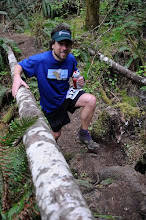My time in Lausanne Switzerland Southern Indiana I find myself trying to wrap my head around the running experiences I’ve had in the past year. Thus it that for my final weekend mountain run I found myself on top of Moleson, heartrate over 190, gasping for breath, exalted in the beauty of what I’ve decided to be my favorite local mountain.
Moleson and Me
The places we run carry connotations defined by the emotions we bring to them, and experiences we've had on previous trips. I spent the spring training for the Zurich
The classic Moleson Teyschaux ridgline
Given that I had only 1 year to explore my surroundings I spent the rest of summer weekends all over Western Switzerland (Suisse Romande, the French speaking part). The Jura’s, which form the border with France, the Valaisan alps, Cornettes de Bise, the Val Ferret, Les Diablerets, Rochers de Naye, Col de Lys, Pic Chaussy, the list goes on an on. Ultimately it’s hard to not draw a comparison between the Swiss mountains and the mountains of my home, the American West. The two could not possibly be more different in terms of our (humans) relationship with them.
I never found anything remotely resembling a wilderness in Switzerland Africa , Saudia Arabian women behind the wheel of a car, Greece China
The concept was invented in America
“A wilderness, in contrast with those areas where man and his own works dominate the landscape, is hereby recognized as an area where the earth and community of life are untrammeled by man, where man himself is a visitor who does not remain.”
Amazing. In the American West it’s almost by default that we accept the idea of a wilderness. It’s our legacy. InSwitzerland
“A wilderness, in contrast with those areas where man and his own works dominate the landscape, is hereby recognized as an area where the earth and community of life are untrammeled by man, where man himself is a visitor who does not remain.”
Amazing. In the American West it’s almost by default that we accept the idea of a wilderness. It’s our legacy. In
The SouthEastern approach from Les Paccots
Garmin says 3900 ft of vertical in 13.8 miles. The final pitch up to Teyschaux's summit (red track in front left) was at 42% grade (1180 ft in 0.53 mi).
The detritus of years worth of weekends spent in the mountains of Western Switzerland.















No comments:
Post a Comment